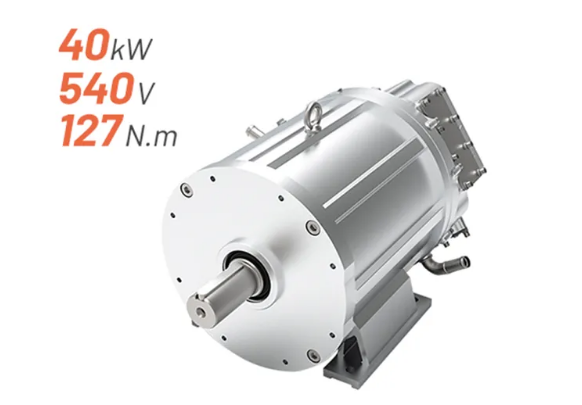Electric Motor Cooling Systems: An Overview
Electric motors play a ubiquitous role in our surroundings, prominently present in every major industry and numerous devices integral to our daily lives. Take, for example, the author's morning routine, which leans on electric motors when operating a coffee grinder, firing up a desktop computer for news consumption, and even configuring an automatic cat feeder. These motors adeptly transform electrical energy into mechanical energy through the dynamic interplay of magnetic fields generated within the motor's stator and rotor windings. Tailored to meet diverse power needs across industries and applications, electric motors come in an array of strengths and sizes.
Electric motors boast impressively high efficiency ratings, often surpassing 90 percent. In simpler terms, a substantial portion of the supplied electrical energy efficiently transforms into mechanical output, with only around 10 percent being dissipated as heat. Thermal management emerges as a primary challenge faced by motor designers across diverse applications.
Choosing the appropriate electric motor typically revolves around specific workload or operational requirements. In scenarios demanding heightened performance, designers may opt to increase the motor's load, allowing it to draw more current. However, this results in elevated heat generation attributed to augmented rotor and stator losses during operation. The thermal behavior of the motor is intricately linked to the heat flux within the system, shaping the temperature evolution based on these losses.
Motor performance is constrained by thermal limits, particularly the maximum allowable temperature within the motor housing, where critical components such as windings and permanent magnets are housed. Uncontrolled temperatures pose risks, potentially causing materials to surpass their designated operational thresholds, resulting in phase changes, softening, melting, or other forms of degradation. The thermal stresses induced can lead to fatigue, cracking, and material deformation, not only curtailing the motor's lifespan but also posing serious safety concerns. Notably, certain electric motors incorporate rare earth magnets that may demagnetize if subjected to excessive heat. Consequently, maintaining optimal temperature levels becomes imperative to prevent efficiency decline and ensure the motor's reliability and robustness. To that end, the generated heat must be managed by an appropriate cooling system.
Several types of cooling systems are available for electric motors, including air cooling, liquid cooling, heat pipes cooling, and hybrid cooling with heat pipes and liquid.
Within the stator channel, the liquid flows longitudinally from the front to the rear of the motor. It enters through the lateral surfaces of the frame at the front and exits through the corresponding surfaces at the rear, enhancing heat transfer from motor cavities directly through these lateral surfaces. The cooling channel in the rotor shaft adopts a circular cross-section, and like the stator channel, the liquid flows axially along the motor's rotation axis from the front to the rear of the motor shaft. To assess thermal behavior, the coolant pipe from the heat exchanger is linked to the motor cooling channels at both the inlet and outlet.
Potting, a process involving filling electronic assemblies with a compound, typically epoxy resin, serves to protect components. In end-windings potting, a robust connection between the end-windings and frame is established using a highly conductive resin, facilitating efficient heat conduction through the potting material and thereby reducing temperatures in the critical end-windings zone.
This diagram's cooling system utilizes various strategies for efficient heat dissipation. Liquid jackets surrounding the motor core, combined with end-windings potting and rotor liquid cooling, form the frame liquid cooling approach, enabling the effective evacuation of heat to the external environment. Additionally, direct cooling of windings through dedicated channels facilitates the dissipation of the elevated heat produced in the windings and their surroundings, attributed to Joule and iron losses.
In this simulation, fluid flow within the frame, windings, and shaft is modeled through the incorporation of pipes and annular channels. Surface and thermal elements are integrated and linked to the fluid network to simulate convective heat transfer between the fluid flow and the solid walls of the pipes. Wall elements, representing the motor's solid components, are interconnected to emulate conductive heat transfer between them.
The task of selecting an appropriate cooling system for an electric motor is a complex undertaking. Numerous factors contribute to this decision-making process, with the optimal cooling system contingent on factors such as the application, operating environment, lifetime requirements, machine configuration, classification, power level, and other considerations.
Discover the diverse types of Electric Motor Cooling Systems essential for your systems. At SonnePower, we provide cutting-edge solutions including controllers, IO Module , keypads, and Display , all designed to enhance efficiency and performance across various industries. Trust our expertise and innovation to power your operations to new heights. Partner with SonnePower today and experience the future of industrial automation!

评论
发表评论